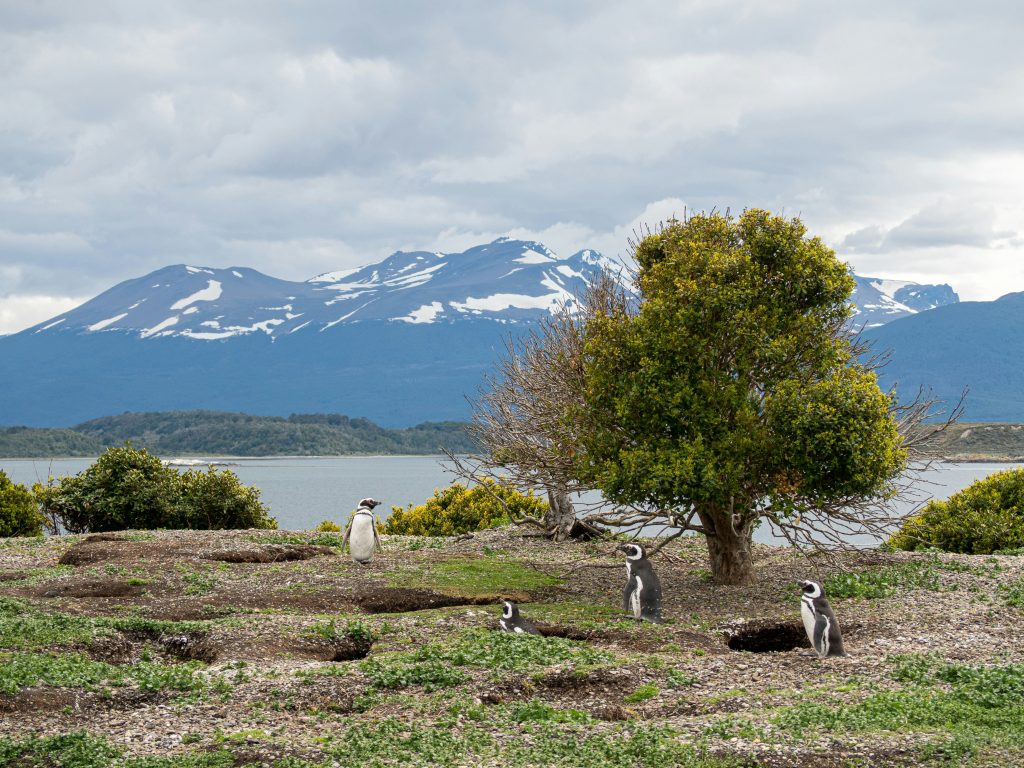The Fascinating World of Patagonian Penguins
Patagonia, a region known for its breathtaking landscapes and diverse wildlife, is home to a unique and enchanting species – the Patagonian penguins. In this article, we will delve into the world of these charismatic birds, exploring their habitats, behaviors, and the best ways to experience them.
Meet the Patagonian Penguins: The two main species found in the region are the Magellanic penguin and the King penguin.
1. Magellanic Penguins (Spheniscus magellanicus)
Physical Characteristics: Magellanic penguins are medium-sized birds with distinctive black and white plumage. They have a black band that runs across their chest, and their heads are adorned with a black stripe and a pinkish patch above the eyes.
Habitat: These penguins primarily inhabit the coasts of Argentina, Chile, and the Falkland Islands. They nest in burrows for protection against predators and harsh weather conditions.
Behavior: Magellanic penguins are known for their burrow-building skills. They mate for life and return to the same nesting site each year. During breeding season, they form large colonies, engaging in courtship rituals and vocal displays.


2. King Penguins (Aptenodytes patagonicus)
Physical Characteristics: King penguins are larger than Magellanic penguins, with a striking appearance featuring a bright orange patch on their lower beaks, contrasting with their black and white plumage. They have a regal posture and are known for their vibrant colors.
Habitat: While King penguins are not as common in Patagonia as Magellanic penguins, some colonies can be found on islands such as Tierra del Fuego. They prefer more subantarctic and Antarctic regions for breeding.
Behavior: King penguins have a more extended breeding cycle than other penguin species. They form large colonies and, like Magellanic penguins, share incubation and chick-rearing duties.
Nesting Sites: Magellanic penguins nest in burrows they dig themselves or take over abandoned burrows. King penguins typically breed in large colonies, building nests on open ground.
Egg Incubation: Both species take turns incubating the eggs, with the male and female sharing responsibilities. The incubation period lasts several weeks, depending on the species.
Chick Rearing: After hatching, chicks are cared for by both parents. Magellanic penguin chicks have a distinctive brown down that gradually changes to the black and white adult plumage. King penguin chicks have a dense brown down.
Conservation Status and Threats:
Conservation Concerns: Both Magellanic and King penguins face threats such as oil spills, overfishing (impacting their food sources), and climate change affecting sea temperatures and food availability.
Conservation Efforts: Conservation initiatives focus on protecting nesting sites, monitoring population trends, and raising awareness about the importance of preserving their habitats.
Best Time to Visit
Magellanic Penguins: The best time to visit Magellanic penguin colonies in Patagonia is during the breeding season, which typically occurs from September to March.
Penguins: While King penguins are not as commonly found in Patagonia, if you’re interested in seeing them, check for colonies on islands like Tierra del Fuego, and consider visiting during the austral summer months (December to February).
Exploring the world of Patagonian penguins offers a unique opportunity to witness the remarkable lives of these fascinating birds in their natural environment.
“It’s practically impossible to look at a penguin and feel angry.” Joe Moore.
Best Places to See Patagonian Penguins
You can see Penguins in Punta Tombo, which is visited from Puerto Madryn. Check out our tours to this region: Puerto Madryn
Also, in Isla Magdalena, located in Chile. You can reach this Island from Punta Arenas. View tours to Punta Arenas.
And also, if you visit Ushuaia, known as the end of the world, you can visit Martillo Island and walk among them!
Keep in mind that most of our tours are flexible. This means you can add nights or activities.
Patagonian penguins are not only a captivating sight but also vital components of the region’s rich biodiversity. Whether you’re a wildlife enthusiast, a nature photographer, or a curious traveler, exploring the world of Patagonian penguins promises an unforgettable experience. Plan your trip to witness these charming birds in their natural habitat and contribute to the conservation efforts that ensure their continued existence. Immerse yourself in the magic of Patagonia and its charismatic penguins!
Get in touch to plan your trip!






One Response
Good!